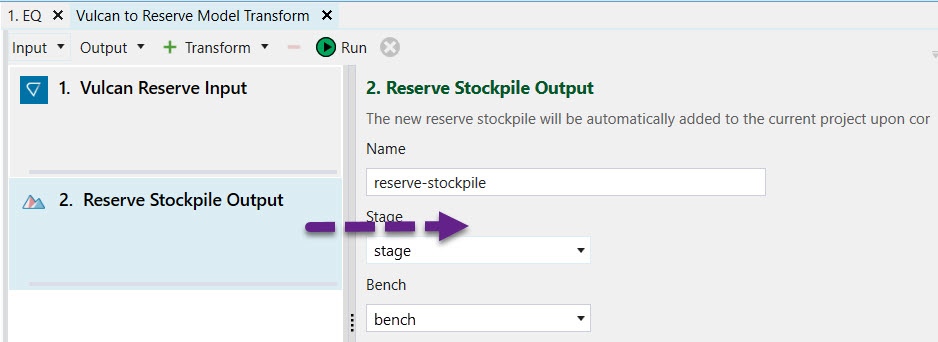Transforming a Solid Model
Reserve models can be imported as a set of triangulations. Other inputs require additional data preparation using a transform.
Inputs
There are two types of inputs that can be supplied to a solid transform:
- DXF Reserve Model
- Vulcan Reserve Model

Transform operations
There are a number of operations that can be performed on a reserve model dataset to improve the quality of data.
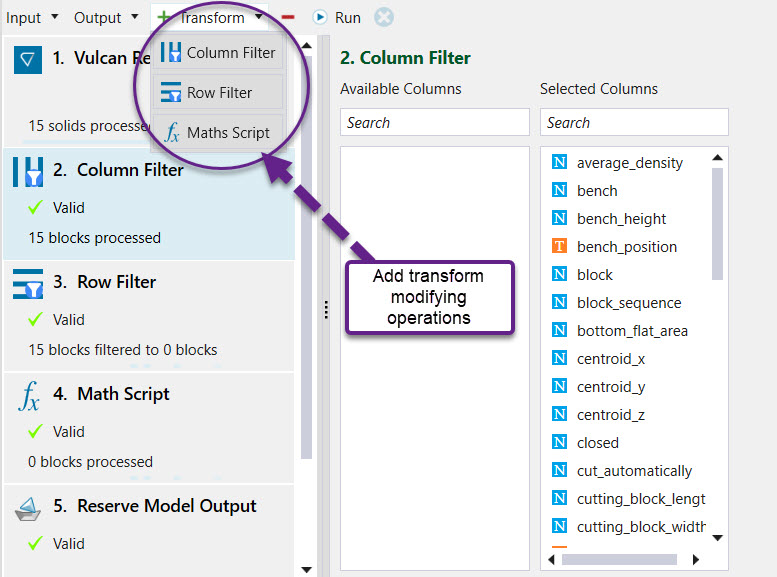
These include:
- Row filter
- Column filter
- Maths Script
Row filter
A Row filter operation is used to exclude solids based on the user-defined equation provided in the script field. For example, to exclude all solids with a mass of zero, the following equation would be used:
solid.TotalMass > 0
Column filter
A Column filter operation is used to include only a subset of attributes from the original list. Attributes are included in the dataset using drag and drop functionality.
Maths Script
A Maths Script operation is used to either add new attributes or modify existing ones in the dataset. Maths scripts can be applied to models even after they have been added to a project. A separate topic has been dedicated to creating maths scripts for reserve models.
Outputs
There are three types of reserve models that can be created:
- Pit (solid)
- Reserve waste dump (solid)
- Stockpile (solid)
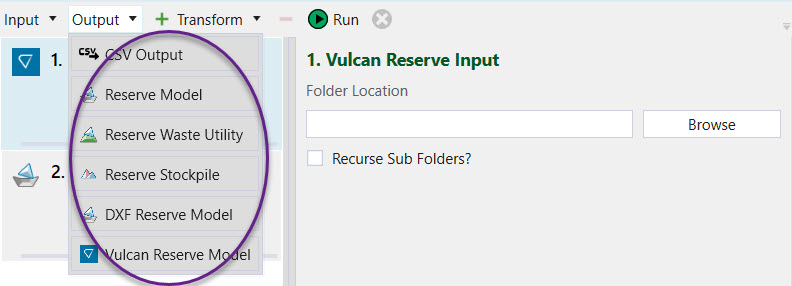
Pit (solid)
A pit represents the site that is being mined. The majority of information requested in a setup is provided from attributes from a pit. To generate a pit, stage and bench attributes need to be set.
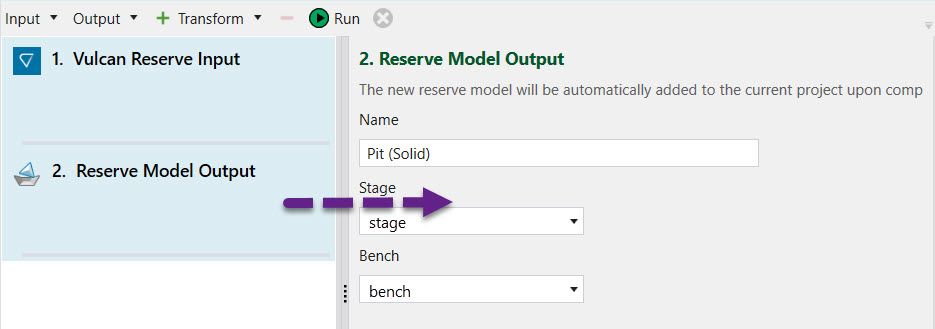
Reserve waste utility
A waste utility is a destination for wasted material from the pit. A reserve waste dump has clearly defined geometry. In an equipment setup, this is necessary for transporting waste to specific locations within the waste utility. If this information isn't required, add a virtual waste dump to your setup. To generate a reserve waste utility, the area and bench attributes need to be set.
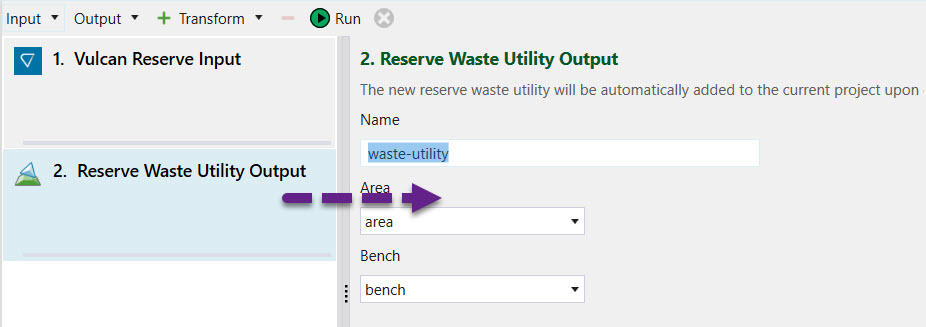
Reserve stockpile
A stockpile is a temporary storage site for low grade material. A reserve stockpile has geometry information which is necessary when the exact destination of a solid is required. If this information isn't needed, you can define the mill overflow to generate a virtual stockpile for excess material. To generate a reserve stockpile, the stage and bench attributes need to be set.
